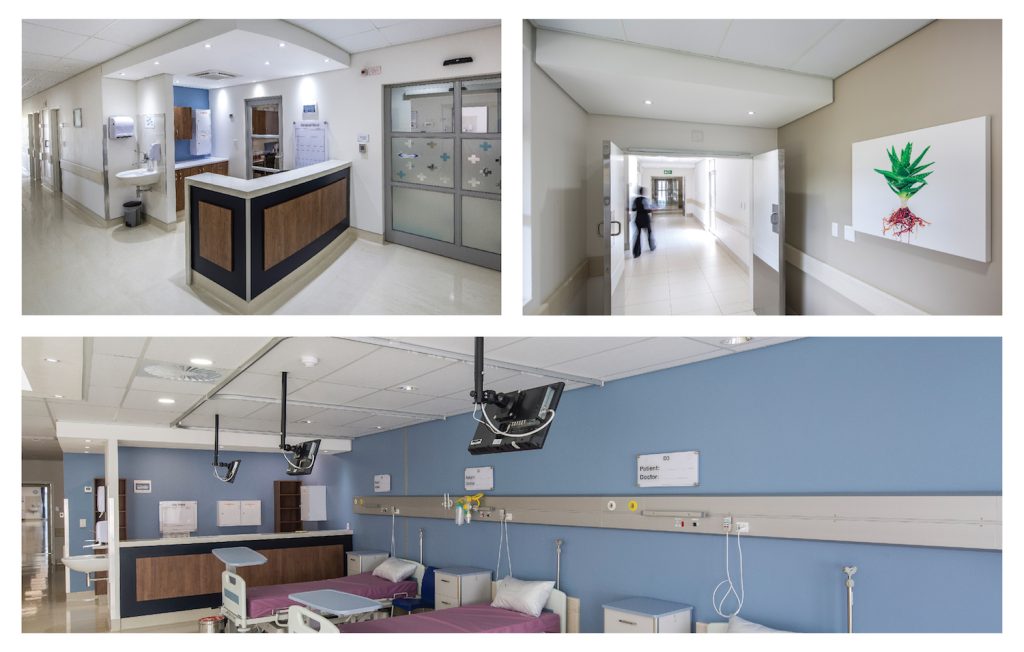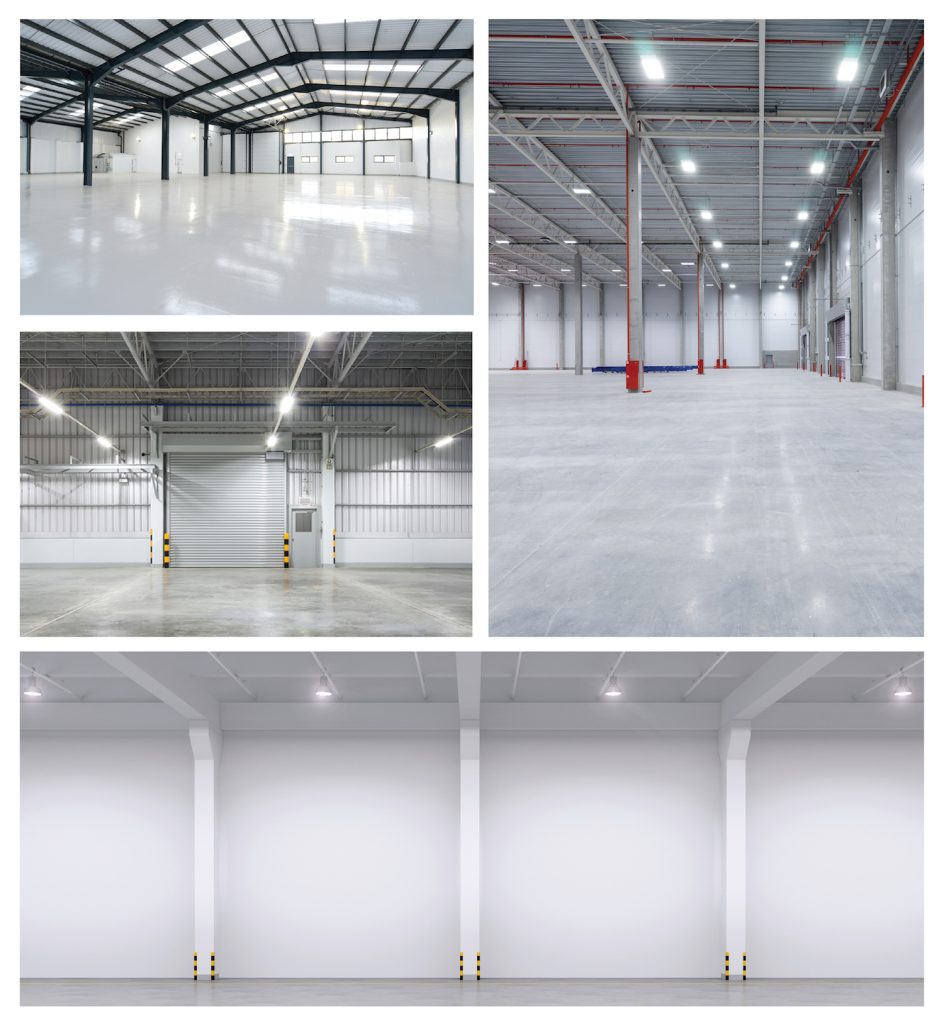The spread of the fire within a building can be restricted by sub dividing the building into compartments separated from each other by fire walls. The two key objectives will be to prevent the fire from spreading to other areas of the building and to contain the size of the fire.
Fire resistant drywalls are designed to provide passive fire protection in buildings. They are used in situations where a wall is required to function as a barrier against fire and smoke for a specified period, allowing occupants to evacuate safely and minimizing damage to property. In South Africa, fire-resistant drywalls are required by law in certain types of buildings, such as multi-story buildings, hospitals, hotels, schools, and high-rise residential buildings.
The period of the fire resistance varies according to the use and the size of the building. The greater the fire hazard a building presents and the greater the risk of loss of life, the greater the period of fire resistance that is required to protect the elements and people within the building.
Fire-resistant drywalls are easy to install and maintain and can be used in both new and existing buildings. The benefits of using fire-resistant drywalls are significant. They provide an extra layer of protection against fire and help prevent the spread of flames and smoke, which can be deadly. They also reduce the risk of damage to property and possessions, helping to minimize the monetary impact of a fire. Construction using lightweight materials, provides significant savings compared to masonry and the speed of the insulation reduces the overall build cost.
The fire separating function is analysed in terms of three main characteristics to assess its suitability, these being integrity, insulation, and stability: –
- Integrity is the ability of separating elements to remain intact, resisting the occurrence of holes, gaps, and cracks which flames, and hot gasses could pass through and sustain flaming on the unexposed face.
- Insulation is the ability of separating elements to restrict the temperature rise of the unexposed face to below specified levels.
- Stability is the ability of the loadbearing element to support its load without deflecting beyond specified limits.
Fire performance includes fire resistance, fire protection and reaction to fire including the surface spread of the flames.
Several factors will contribute to the overall fire resistance performance of the partition system:
- Partition height
- Board type, thickness, and number of layers
- Staggered board joints
- Stud type, width, and gauge
- Stud centres
- Screw fixing type and length of fixing centres
- Jointing and plastering
- Fixing details at the partition head and base.
Pelican Systems recently achieved a 60-Minute Fire Test Result for a six-metre-high drywall using their JUMBO FireWALL system, and a 120 Minute Fire Test result for a three-metre-high drywall. These systems are non-loadbearing, high-performance fire-resistant drywalls, using one 12mm and one 15mm fire-resistant JUMBO board on either side of a 102mm stud and 103mm track, giving an overall wall thickness of 156mm.
The JUMBO FireWALL system has met the criteria for stability, integrity, and insulation for both 60 and 120 minutes, in accordance with SANS 10177-2 test protocol.
In South Africa, 6-metre-high walls are often used in commercial and industrial buildings, such as warehouses, factories, and distribution centres. These buildings may contain substantial amounts of combustible materials, making them more susceptible to fire incidents. A 6-metre-high wall can function as a barrier, preventing the spread of fire and smoke from one part of the building to another, allowing occupants to evacuate safely and minimizing damage to property.
Another reason for using 6-metre-high walls is to comply with building regulations. In some cases, local building regulations may require buildings to have a certain level of fire protection, which may include the use of fire-resistant drywalls. By using high-performance fire-resistant drywalls, such as the JUMBO FireWALL system, building owners can meet these regulations and ensure the safety of their occupants.
In addition to commercial and industrial buildings, 6-metre-high walls may also be used in other types of buildings, such as multi-story apartment buildings, hotels, and hospitals. These buildings typically have a higher occupancy, making it critical to have fire-resistant barriers in place to prevent the spread of fire and smoke and allow for safe evacuation.
Buildings that accommodate a large number of people, such as auditoriums, concert halls, sports stadiums, or convention centres, may also require six-metre-high fire-resistant walls. These walls enhance the safety of occupants by providing a substantial barrier against fire and smoke, allowing for orderly evacuation, and minimizing the risk of fire-related injuries.
Specialized facilities, such as data centres, research laboratories, or server rooms, which house valuable equipment, sensitive data, or critical operations will also benefit from the installation of six-metre-high fire-resistant walls which adds an extra layer of protection against fire hazards, reducing the potential for damage and downtime.
Overall, 6-metre-high walls are important in providing an extra layer of protection against fire and smoke, preventing the spread of flames, and complying with building regulations. By using high-performance fire-resistant drywalls, such as the JUMBO FireWALL system, building owners can ensure the safety of their occupants and minimize the risk of damage to property.
It is essential to consult local building codes, regulations, and fire safety standards specific to South Africa for a comprehensive understanding of when and where six-metre-high fire-resistant walls are required. These regulations will provide detailed guidelines and specifications, ensuring compliance and promoting the safety of occupants and property in various building scenarios.
For heights of three metres, this JUMBO FireWALL achieved 120 minutes and can be used for various applications, including student accommodation where there is a need to fix TVs, shelving, and other items to the wall. This is due to its high fire resistance rating and its ability to withstand the weight of these fixtures.
In conclusion, high-performance fire-resistant drywalls, such as the JUMBO FireWALL system, provide an essential layer of protection against fire and smoke, helping to keep occupants safe and minimize damage to property. These systems are required by law in certain types of buildings, and their benefits are significant.
Additional items installed in a Fire Wall like a door and frame will need to have the same fire rating as the FireWALL (Class A – One hour / Class B – Two Hour) or the partition will lose the fire rating.
Pelican Systems range of Fire Solutions for Drywall’s, now include the following four systems which have been tested and meet the required standards.
- JUMBO FireWALL 63/60/4.2m
- JUMBO FireWALL 63/120/4.2m
- JUMBO FireWALL 102/60/6m
- JUMBO FireWALL 102/120/3m
Brochures, Specification Data Sheets and BOQ Specification please follow the ink to our website solutions page:









